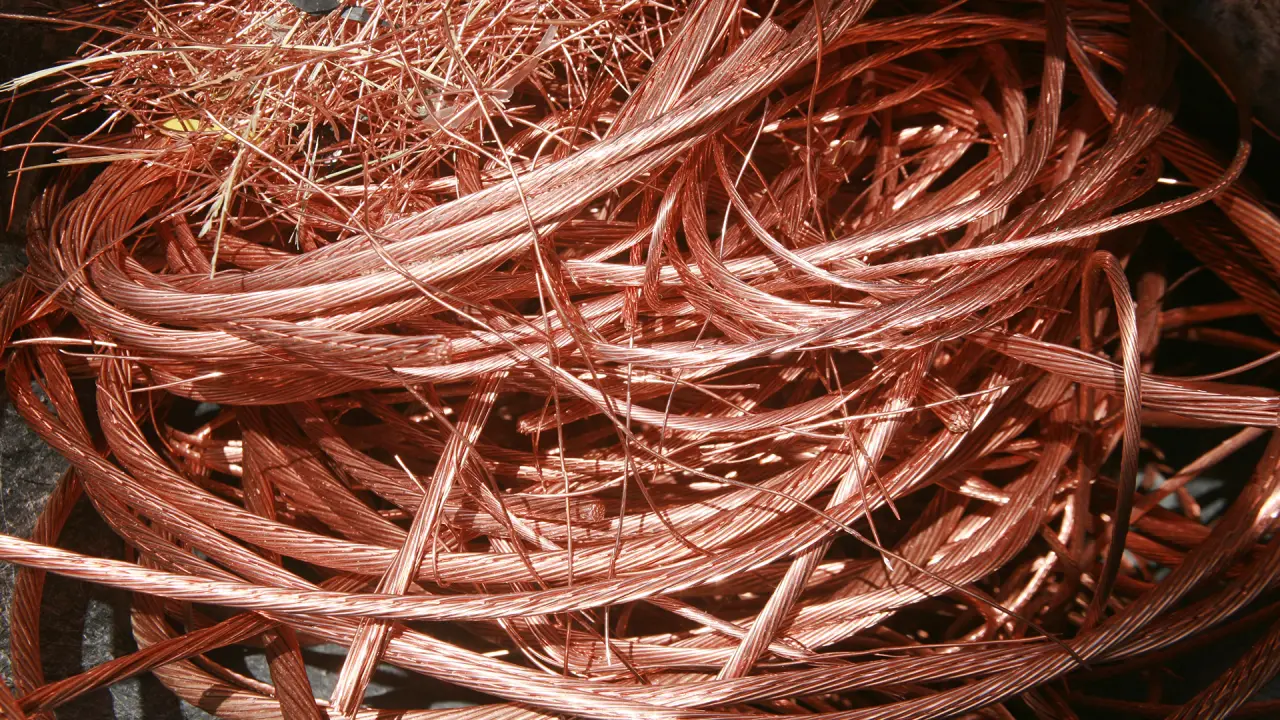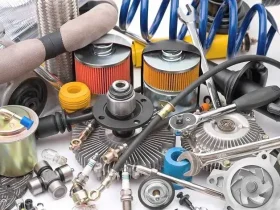Welcome to our comprehensive guide on copper types, where we’ll delve into the world of Millberry Copper and compare it to other types of copper.
If you’ve ever wondered about the differences and applications of various copper types, this is the guide for you.
In this blog post, we’ll provide an in-depth analysis of Millberry Copper and examine how it fares against other copper types. So, let’s dive in!
Understanding Copper Types
Copper is a versatile metal that plays a crucial role in various industries, from electrical wiring to plumbing and beyond. Different copper types offer unique properties and applications, making it important to understand the distinctions between them. In this section, we’ll shed light on the most common copper types you’ll come across.
Millberry Copper:
Definition and Composition
Millberry Copper refers to a specific grade of copper that is widely used in electrical, automotive, and industrial applications. It is renowned for its high purity and excellent conductivity. Millberry Copper is typically 99.9% pure and consists of uncoated, untinned, and unalloyed copper wire. Its smooth surface and absence of impurities make it ideal for various purposes.
Production Process
The production process of Millberry Copper involves several steps to ensure its high purity and quality. It begins with the collection of copper wire scrap, which undergoes a thorough cleaning process to remove any impurities or foreign materials. The cleaned scrap is then subjected to a mechanical shredding process, resulting in smaller pieces of copper wire. These tiny fragments are further processed using a granulation machine, transforming them into the fine copper granules that form the basis of Millberry Copper.
Applications
Millberry Copper finds extensive use in different industries due to its exceptional electrical conductivity and purity. Some common applications include:
- Electrical Wiring: Millberry Copper’s high conductivity makes it an ideal choice for electrical wiring in homes, commercial buildings, and industrial settings.
- Telecommunications: The smooth surface and purity of Millberry Kupfer enable efficient transmission of signals in the telecommunications industry.
- Automotive Components: It is used in various automotive components, such as connectors, wiring harnesses, and electrical systems, due to its reliability and conductivity.
- Power Generation and Distribution: Millberry Copper plays a vital role in power generation and distribution systems, ensuring efficient transmission of electricity.
Other Types of Copper
While Millberry Copper holds its own in terms of purity and conductivity, it’s important to explore other common types of copper to understand their characteristics and applications fully.
Copper Cathode
Copper cathode is another important copper type known for its high purity. It is produced through the electrorefining process, which involves the purification of copper ore. Copper cathodes are often used to produce copper wire, rods, and various electrical and electronic components.
Copper Wire Rod
Copper wire rod is a form of copper that is primarily used for the production of wires and cables. It is manufactured by continuously casting and rolling molten copper into long, cylindrical shapes. Copper wire rod’s quality and conductivity make it ideal for the electrical industry.
Oxygen-Free Copper
Oxygen-free copper, also known as OFC, is a highly refined form of copper reduced oxygen content. It offers excellent conductivity and is commonly used in audio equipment, musical instruments, and high-tech applications where signal integrity is crucial.
The Pros and Cons of Millberry Copper
Before diving into the detailed comparison, let’s explore the advantages and disadvantages of Millberry Copper.
Advantages
- High Purity: Millberry Copper is renowned for its exceptional purity, allowing for efficient and reliable electrical conductivity.
- Smooth Surface: The absence of impurities and the smooth surface of Millberry Copper contribute to its excellent performance in various applications.
- Versatility: It can be used in diverse industries, ranging from electrical and automotive to telecommunications and power generation.
- Recyclability: Millberry Copper is highly recyclable, reducing the need for extracting and refining new copper, making it an environmentally friendly option.
Disadvantages
- Cost: Millberry Copper may be more expensive compared to some other copper types due to its high purity and refined production process.
- Availability: Depending on the location and market demand, the availability of Millberry Copper may vary. It is essential to consider alternative copper options when faced with limited availability.
Millberry Copper vs. Other Copper Types: A Detailed Comparison
In this section, we’ll delve deeper into the key factors that differentiate Millberry Copper from other copper types. Let’s compare them based on quality and purity, cost and availability, durability and strength, as well as applications and uses.
1. Quality and Purity
Millberry Copper:
- Exceptionally high purity (99.9%)
- Free from impurities and surface defects
- Smooth and clean surface
Copper Cathode:
- High purity (usually above 99.95%)
- Subject to the electrorefining process to remove impurities
- Can have a smooth or slightly irregular surface
Copper Wire Rod:
- High purity (typically above 99%)
- May have a slightly rougher surface compared to Millberry Copper and Copper Cathode
- Used for producing wires, cables, and other electrical components
Oxygen-Free Copper:
- High purity with low oxygen content (typically less than 10 ppm)
- Extremely smooth surface with minimal imperfections
- Widely used in audio equipment and high-tech applications
2. Cost and Availability
Millberry Copper:
- May have a higher cost due to its refined production process and high purity
- Availability can vary based on location and market demand
- Worth the investment for applications where purity and efficiency are paramount
Copper Cathode:
- Comparatively lower cost due to the electrorefining process
- Widely available in the market
- Frequently used as a basis for producing other copper products
Copper Wire Rod:
- Moderate cost depending on specifications and market conditions
- Generally available in the electrical industry
- Offers a balance between cost and quality for specific applications
Oxygen-Free Copper:
- Higher cost compared to other copper types due to its specialized production process and purity requirements
- Availability may be limited in certain markets and regions
- Preferred for applications requiring superior signal integrity
3. Durability and Strength
Millberry Copper:
- Exhibits good durability and strength due to its high purity and absence of impurities
- Resistant to corrosion and oxidation
- Ideal for applications where longevity and reliability are essential
Copper Cathode:
- Similar durability and strength to Millberry Copper due to shared purity levels
- Capable of withstanding various environmental conditions
- Widely used for its reliability and performance
Copper Wire Rod:
- Offers good strength and durability, suitable for electrical wiring purposes
- Can be further processed to enhance tensile strength if needed
- Provides longevity and dependability in electrical applications
Oxygen-Free Copper:
- Excellent durability and strength, making it suitable for critical applications
- Enhanced resistance to corrosion and oxidation due to minimal oxygen content
- Offers long-lasting performance in demanding environments
4. Applications and Uses
Millberry Copper:
- Ideal for electrical wiring, connectors, and power transmission
- Widely used in the automotive industry for wiring harnesses and electrical components
- Suitable for telecommunications equipment and power generation systems
Copper Cathode:
- Serves as a basis for producing other copper products, such as wires, rods, and electrical components
- Used extensively in electrical and electronic applications
- Finds applications in various industries that require high-purity copper
Copper Wire Rod:
- Primarily used for manufacturing wires and cables
- Commonly employed in electrical installations, telecommunications, and power transmission
- Offers a versatile solution for electrical conductors
Oxygen-Free Copper:
- Valued in audio equipment for its superior conductivity and minimal signal distortion
- Used in musical instruments to enhance sound quality
- Vital for high-tech applications demanding reliable signal transmission
Conclusion
In conclusion, Millberry Copper stands out as a high-purity copper type with exceptional conductivity and cleanliness. Its smooth surface, absence of impurities, and versatility make it a popular choice in various industries. While Millberry Copper may have a higher cost compared to other types of copper, its outstanding properties and reliability justify the investment for applications that demand top-notch performance.
However, it’s worth noting that other copper types like copper cathode, copper wire rod, and oxygen-free copper also serve specific purposes and offer unique advantages. Each copper type excels in different areas, and the choice depends on the specific requirements of the intended application.
Understanding the distinctions between various copper types empowers you to make informed decisions when selecting the right copper for your projects. Whether it’s Millberry Copper or one of its counterparts, copper’s exceptional properties continue to contribute significantly to our modern society’s infrastructure and technological advancements.
If you have any further questions or need guidance on choosing the appropriate copper type for your specific needs, feel free to reach out to us. Our team of experts is always ready to assist you.







